Pioneer KEH-P2035 Bedienungsanleitung
Lies die bedienungsanleitung für Pioneer KEH-P2035 (6 Seiten) kostenlos online; sie gehört zur Kategorie Empfänger. Dieses Handbuch wurde von 23 Personen als hilfreich bewertet und erhielt im Schnitt 4.3 Sterne aus 12 Bewertungen. Hast du eine Frage zu Pioneer KEH-P2035 oder möchtest du andere Nutzer dieses Produkts befragen? Stelle eine Frage
Seite 1/6

30˚
7
182
53
12
3
4
<KSNNN/02H00000>
KEH-P2035
Printed in Malaysia
<CZR2956-A> ES
This product conforms to new cord colors.
Los colores de los cables de este producto se
conforman con un nuevo código de colores.
u« l “UN'« «c¼ r−M¹Æ…b¹b'« „öÝô« Ê«
5
6
Fig. 4
¥ qJA«
10
11
13
12
8
9
Note:
• Before finally installing the unit, connect the
wiring temporarily, making sure it is all connect-
ed up properly, and the unit and the system work
properly.
• Use only the parts included with the unit to
ensure proper installation. The use of unautho-
rized parts can cause malfunctions.
• Consult with your nearest dealer if installation
requires the drilling of holes or other modifica-
tions of the vehicle.
• Install the unit where it does not get in the dri-
ver’s way and cannot injure the passenger if there
is a sudden stop, like an emergency stop.
• The semiconductor laser will be damaged if it
overheats, so don’t install the unit anywhere hot
— for instance, near a heater outlet.
• If installation angle exceeds 30° from horizontal,
the unit might not give its optimum performance.
(Fig. 1)
DIN Front/Rear-mount
This unit can be properly installed either from
“Front” (conventional DIN Front-mount) or
“Rear” (DIN Rear-mount installation, utilizing
threaded screw holes at the sides of unit chassis).
For details, refer to the following illustrated
installation methods.
DIN Front-mount
Installation with the rubber bush (Fig. 2)
1. Dashboard
2. Holder
After inserting the holder into the dashboard,
then select the appropriate tabs according to the
thickness of the dashboard material and bend
them.
(Install as firmly as possible using the top and
bottom tabs. To secure, bend the tabs 90
degrees.)
3. Rubber bush
4. Screw
Removing the Unit (Fig. 3) (Fig. 4)
5. Frame
6. Insert the release pin into the hole in the bottom
of the frame and pull out to remove the frame.
(When reattaching the frame, point the side with
a groove downwards and attach it.)
7. Insert the supplied extraction keys into the unit,
as shown in the figure, until they click into place.
Keeping the keys pressed against the sides of the
unit, pull the unit out.
DIN Rear-mount
Installation using the screw holes on
the side of the unit (Fig. 5) (Fig. 6) (Fig. 7)
1. Remove the frame.
8. Frame
9. Insert the release pin into the hole in the bottom
of the frame and pull out to remove the frame.
(When reattaching the frame, point the side with
a groove downwards and attach it.)
2. Fastening the unit to the factory
radio mounting bracket.
10. Select a position where the screw holes of the
bracket and the screw holes of the head unit
become aligned (are fitted), and tighten the
screws at 2 places on each side. Use either truss
screws (5 ×8 mm) or flush surface screws
(5 ×9 mm), depending on the shape of the screw
holes in the bracket.
11. Screw
12. Factory radio mounting bracket
13. Dashboard or Console
Installation <ENGLISH>
Fig. 2
≤ qJA«
Fig. 1
± qJA«
Fig. 3
≥ qJA«
Fig. 5
µ qJA«
Fig. 6
∂ qJA«
Fig. 7
∑ qJA«
INSTALLATION MANUAL
INSTALLATION MANUAL

Nota:
• Antes de finalmente instalar la unidad, conecte el
cableado temporalmente y asegúrese de que todo
esté conectado correctamente y que la unidad y
el sistema funcionan debidamente.
• Utilice sólo las piezas que se incluyen con esta
unidad para asegurar la instalación adecuada. El
uso de piezas no autorizadas podría causar fallos
de funcionamiento.
• Consulte con su distribuidor si la instalación
requiere del taladro de orificios u otras modifica-
ciones del vehículo.
• Instale la unidad donde no alcance el espacio del
conductor, y donde no pueda dañar a los
pasajeros si sucediera un paro repentino, como
una detención de emergencia.
• El semiconductor láser se dañará si se sobre-
calienta, por eso no instale la unidad en un lugar
caliente – por ejemplo, cerca de la salida de un
calefactor.
• Si el ángulo de la instalación excede los 30° del
lado horizontal, la unidad podría no brindar su
óptimo funcionamiento (Fig. 1).
Montaje delantero/trasero DIN
Esta unidad quede instalarse correstamente de la
“Delantera” (montaje delantero DIN conven-
ciona) o “Trasera” (montaje trasero DIN, uti-
lizando los tornillos roscados en los constados
del chasis de la unidad). Para detalles, refiérase a
los métodos de instalación ilustrados abajo.
Montaje delantero DIN
Instalación con tope de goma (Fig. 2)
1. Tablero de instrumentos
2. Soporte
Después de insertar el soporte en la tabla de
mandos, luego seleccione las orejetas apropiadas
según el grosor del material de la tabla de man-
dos y dóblelos.
(Instale lo más firme posible usando las lengüetas
superior e inferior. Para fijar, doble las lengüetas
90 grados.)
3. Tope de goma
4. Tornillo
Quitado de la unidad (Fig. 3) (Fig. 4)
5. Marco
6. Inserte el pasador de liberanción en el orificio de
la parte inferior del marco, y tire hacia afuera
para extraer el marco.
(Para la fijación del marco, apunte el lado con
ranura hacia abajo.)
7. Inserte las herramientas de extracción sumin-
istradas en la unidad, como se indica en la figura,
hasta que se enganchen en su positión.
Tire de la unidad mientras mantiene las her-
ramientas presionadas contra los lados de la
unidad.
Montaje trasero DIN
Instalación usando los agujeros para
tornillos ubicados en ambos costados
de la unidad (Fig. 5) (Fig. 6) (Fig. 7)
1. Quite el marco.
8. Marco
9. Inserte el pasador de liberanción en el orificio de
la parte inferior del marco, y tire hacia afuera
para extaer el marco.
(Para la fijación del marco, apunte el lado con
ranura hacia abajo.)
2. Fijación de la unidad a la ménsula de
montaje existente.
10. Seleccione una posición en la que los orificios
para los tornillos del soporte y del de la unidad
principal queden alineados, y apriete los tornillos
en 2 lugares de un lado. Utilice p2-ya sea los tornil-
los de fijación (5 8 mm) o los tornillos a paño×
(5 ×9 mm), dependiendo de la forma de los ori-
ficios de tornillo en la ménsula.
11. Tornillo
12. Ménsula de montaje de radio existente
13. Tablero de instrumentos o consola
Instalación <ESPAÑOL>
VOd²«
æ
æWOÐdF«º
©¥ qJA«® ©≥ qJA«® “UN'« Ÿe½
5≠—UÞ≈
6≠u*« VI¦« w ‚U²Žù« —UL qšœ√ułw œ Ë —UÞû wKH« V½U'«ŸdM ×UK »cł«
Ë Æ—UÞù« qOuð …œUŽ≈ bMŽ® Æ—UÞù«V½U'« tł ©ÆtKOu²Ð r Ë qHÝ_ oAUÐ
7≠d²Ýô« `OðUH qšœ√d*« ëu« w WI¨…bŠ u*Ud¹ v²Š ¨qJA« w `{uÝrN½UJ w « u —ËbBÐ ÂUJŠUÐjGCÐ ÿUH²Šô« l WIÞ
u« w³½Uł qÐUI `OðUH*«u« V×Ý≈ ¨…bŠ…bŠ Æ×UK
ÂUEM«DINwHK'« XO³¦²K
vKŽ …œułu*« wž«d³« »uIŁ ‰ULF²ÝUÐ VOd²«
©∑ qJA«® ©∂ qJA«® ©µ qJA«® …bŠu« w³½Uł
≠±≠±
≠±≠±
≠±—UÞù« Ÿe½≈—UÞù« Ÿe½≈
—UÞù« Ÿe½≈—UÞù« Ÿe½≈
—UÞù« Ÿe½≈
8≠—UÞô«
9≠u*« VI¦« w ‚U²Ž_« —UL qšœ√ułw œ Ë —UÞö wKH« V½U'«ŸeM ×UK »cł« Æ—UÞô«
Ë ¨—UÞô« qOuð …œUŽ≈ bMŽ®ł
Ó
oAUÐ V½U'« t ©ÆtKOu²Ð r Ë qHÝ_
≠≤≠≤≠≤≠≤≠≤ËËËËË
ÓÓÓÓÓ
ŁŁŁŁŁÚÚÚÚÚlMB*« WHO² v≈ …bŠu« olMB*« WHO² v≈ …bŠu« olMB*« WHO² v≈ …bŠu« olMB*« WHO² v≈ …bŠu« olMB*« WHO² v≈ …bŠu« o
Æu¹œ«d« XO³¦² WOK_«Æu¹œ«d« XO³¦² WOK_«
Æu¹œ«d« XO³¦² WOK_«Æu¹œ«d« XO³¦² WOK_«Æu¹œ«d« XO³¦² WOK_«
10≠u d²š≈F{
Î
ð U
Ô
uIŁ tO `³BdÐ »Ë WHO²J« wž« uIŁdÐ »u« wž«d« …bŠd² WOOzWH« Ë ¨ ©WIÐUD² `³Bð®— rJŠ«d³« jÐbMŽ wž« u*«dÐ U≈ Âb²Ý≈ ÆV½Uł q vKŽ 5F{wž« dÐ Ë√ ©3 ∏ ™ µ® bOOIð`D« ¡UK wž«
uIŁ qJý vKŽ p– bL²F¹ Ë ¨ ©3 π™µ®» d³«u*« wž«ułÆ WHO²J« w …œ
11≠dÐwž
12≠d« XO³¦² ZOK_« lMB*« WHO²u¹œ«
13≠ueNł√ WŠe)« Ë√ ”UOI« …W½«
∫WEŠö<∫WEŠö<
∫WEŠö<∫WEŠö<∫WEŠö<
•dð q³OzUN½ “UN'« VO
Î
pKÝô« qOu²Ð r ¨U R qJAÐq qOuð W× s bQ²« l ¨X
Ë „öÝô«ÆÂUEM« Ë “UN'« qOGAð WöÝ
•u*« lDI« qLF²Ý≈ułbU²K jI “UN'« l …œ d²« sdOž lD ‰ULF²Ý≈ VÝUM*« VO dÆôUDŽ√ V³¹ Ê√ sJ1 WBš
•d√ dA²Ý«Ë »d²« VKDð «–≈ p qOqLŽ VO uIŁdš√ ö¹bFð Ë√ »dO« w ÈÆ…
•—d²F¹ ô YOŠ “UN'« VdŠ ÷ô Ë ozU« W u¹ Ê√ sJ1d« Í–u Ë WUŠ w »U· u« q¦Æ¡vłUHuuD« bMŽ ·—«Æ¡È
•dFð «–« —eOK« qu t³ý qDF²OÝ—ô ÷ŸUHð —œdŠ Wł—«dð ô «c ¨tðÊUJ Í√ w “UN'« V dIUÐ ¨ö¦ fl sšUÝÃdš Uײ s » ÆW¾b²«
•“ËU& «–≈“ Ë«d²« W¹ô bI o_« s ≥∞ VO R¹©± qJA«® Æq¦_« tKLŽ “UN'« Íœ
ÂUEM«DINwHK)«Øw<U<_« XO³¦²K
dð sJ1u« Ác¼ VOs U≈ VÝUM qJAÐ …bŠ ÂUEM«® ¢ÂU_«¢DINXO³¦²K ÈbOKI²«
ÂUEM«® ¢nK)«¢ Ë√ ©wU_«DINd² VO uI¦Ð …œUH²ÝùUÐ ¨wHK)« XO³¦²«d³« »wž« *«
Ò
u*« XMMułuł vKŽ …œu« qJO¼ V½«Æ©…bŠ —≈ ¨qOUH²Kd²« ‚dÞ v« lłu*« VOW×{ ÆwK¹ ULO
ÂUEM«DINw<U<_« XO³¦²K
UD*« W½UD³« l< VOd²«©≤ qJA«® WOÞ
1≠ueNł√ WŠ”UOI« …
2≠WJÝU*«
u w WJÝU*« ‰Ušœ≈ bFÐeNł√ WŠ… ËdF« d²š≈ rŁÆ”UOI«VŠ W³ÝUM*« « u …œU WULÝeNł√ WŠÆUNMŁ≈ Ë ”UOI« … d²UÐ r®‰ULF²ÝUÐ ÊUJô« —bIÐ ÂUJŠUÐ VO ËdF«uKF« «Ë W¹wM¦Ð r ¨5P²K ÆWOKH« ËdF«—œ π∞ «©ÆWł
3≠WOÞUD W½UDÐ
4≠dÐwž

Produktspezifikationen
| Marke: | Pioneer |
| Kategorie: | Empfänger |
| Modell: | KEH-P2035 |
Brauchst du Hilfe?
Wenn Sie Hilfe mit Pioneer KEH-P2035 benötigen, stellen Sie unten eine Frage und andere Benutzer werden Ihnen antworten
Bedienungsanleitung Empfänger Pioneer
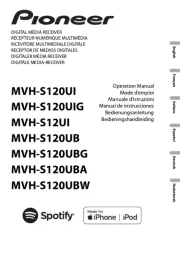
1 August 2025
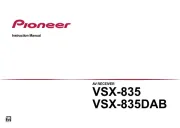
1 August 2025

14 Juli 2025
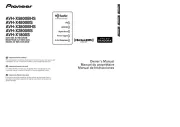
11 Juli 2025
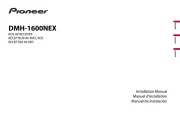
23 Juni 2025
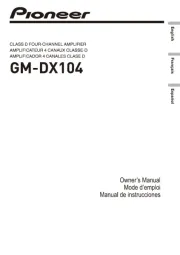
21 Juni 2025
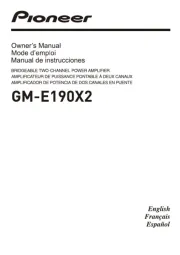
15 Juni 2025

10 Oktober 2024

18 September 2024

14 September 2024
Bedienungsanleitung Empfänger
- Sonifex
- AMC
- VMV
- Luxman
- Earthquake Sound
- UNiKA
- Naxa
- Stewart
- Optoma
- Belkin
- Audizio
- Exibel
- American Audio
- Kogan
- Proel
Neueste Bedienungsanleitung für -Kategorien-
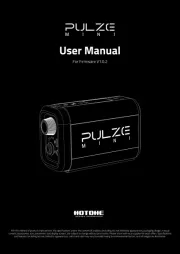
7 August 2025
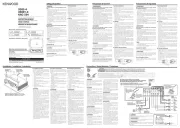
7 August 2025
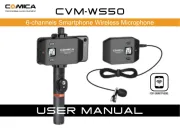
7 August 2025
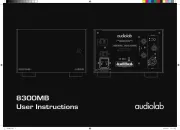
7 August 2025
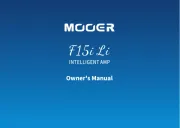
6 August 2025
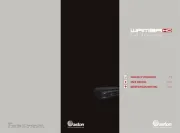
6 August 2025
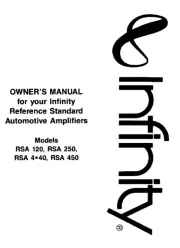
6 August 2025

5 August 2025
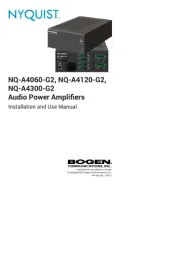
5 August 2025
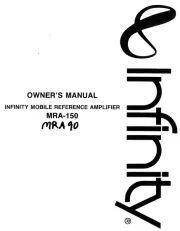
5 August 2025